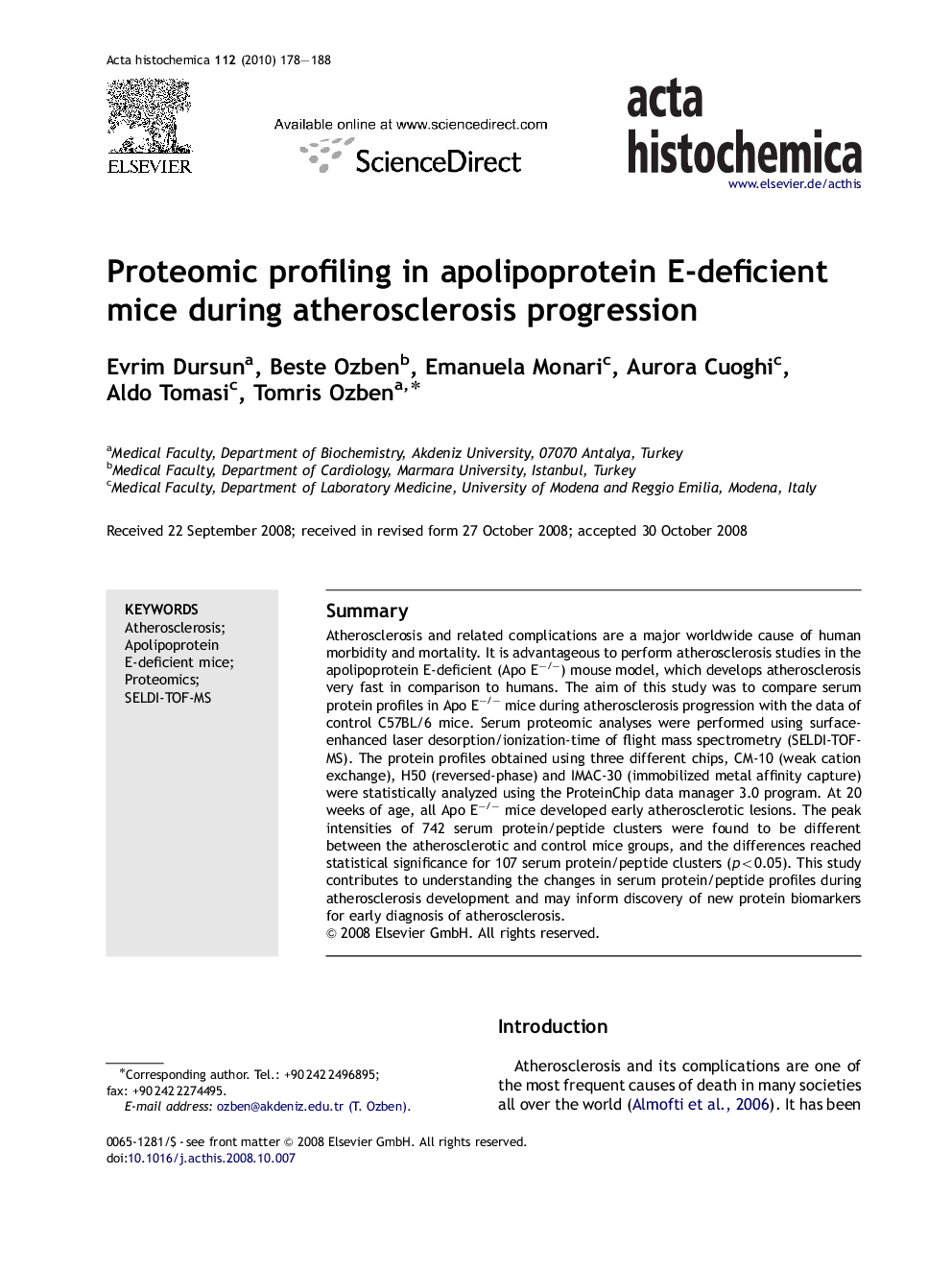| Article ID | Journal | Published Year | Pages | File Type |
|---|---|---|---|---|
| 1923999 | Acta Histochemica | 2010 | 11 Pages |
SummaryAtherosclerosis and related complications are a major worldwide cause of human morbidity and mortality. It is advantageous to perform atherosclerosis studies in the apolipoprotein E-deficient (Apo E−/−) mouse model, which develops atherosclerosis very fast in comparison to humans. The aim of this study was to compare serum protein profiles in Apo E−/− mice during atherosclerosis progression with the data of control C57BL/6 mice. Serum proteomic analyses were performed using surface-enhanced laser desorption/ionization-time of flight mass spectrometry (SELDI-TOF-MS). The protein profiles obtained using three different chips, CM-10 (weak cation exchange), H50 (reversed-phase) and IMAC-30 (immobilized metal affinity capture) were statistically analyzed using the ProteinChip data manager 3.0 program. At 20 weeks of age, all Apo E−/− mice developed early atherosclerotic lesions. The peak intensities of 742 serum protein/peptide clusters were found to be different between the atherosclerotic and control mice groups, and the differences reached statistical significance for 107 serum protein/peptide clusters (p<0.05). This study contributes to understanding the changes in serum protein/peptide profiles during atherosclerosis development and may inform discovery of new protein biomarkers for early diagnosis of atherosclerosis.
